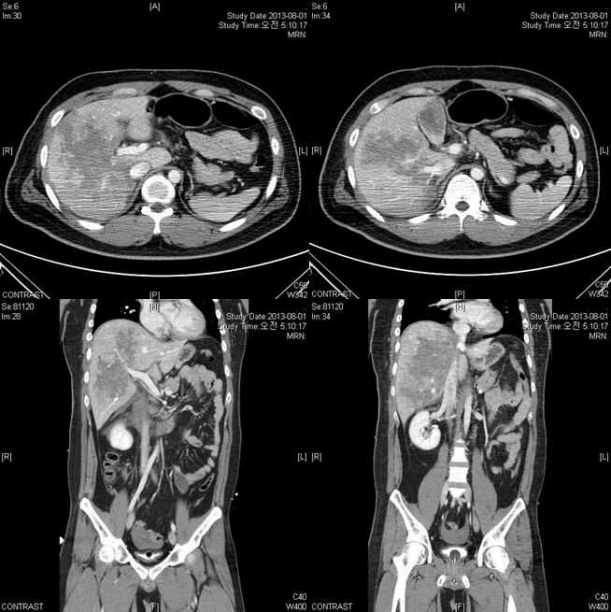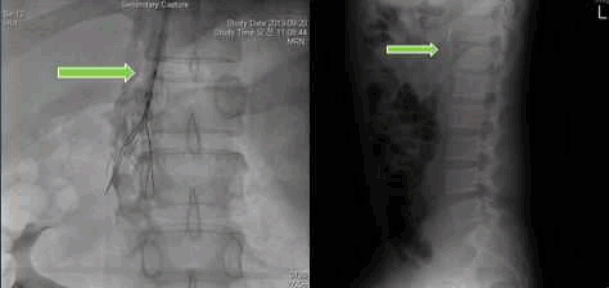CASE
A 25-year-old man visited the hospital due to abdominal trauma caused by a traffic accident. His vital signs were normal, and he complained of pains in the abdomen, neck and right foot. Abdominal computed tomography showed a hepatic injury and a conservative treatment was performed in the intensive care unit. One week later, a follow up abdominal computed tomography revealed thrombosis from the iliac vein to the inferior vena cava which prompted heparin therapy. Two weeks after admission, the patient underwent an operation on a right metatarsal fracture, and a follow up abdominal computed tomography scan was performed to observe thrombosis. Thrombosis was found to be elevated, and an IVC filter was inserted into the inferior vena cava. Concomitant use of heparin, followed by conservative treatment with coumadin, continued the 28th day following abdominal computed tomography, which resulted in abatement of the thrombosis. The patient was discharged on the 34th day after admission without further complications.
DISCUSSION
Although the incidence of severe post-traumatic venous thrombosis is not high, it may lead to fatal complications such as pulmonary embolism [1,2]. Therefore, early detection and appropriate treatment are required. Prophylactic treatment is warranted to identify risk factors that increase the likelihood of thrombosis, and active treatment is required when this occurs.











